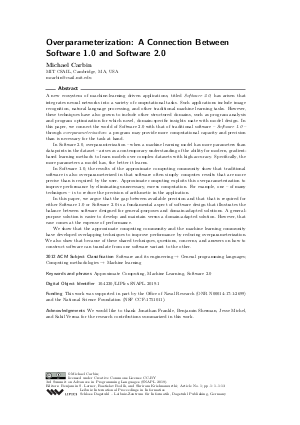LIPIcs.SNAPL.2019.1.pdf
- Filesize: 0.55 MB
- 13 pages

 Creative Commons Attribution 3.0 Unported license
Creative Commons Attribution 3.0 Unported license























Feedback for Dagstuhl Publishing